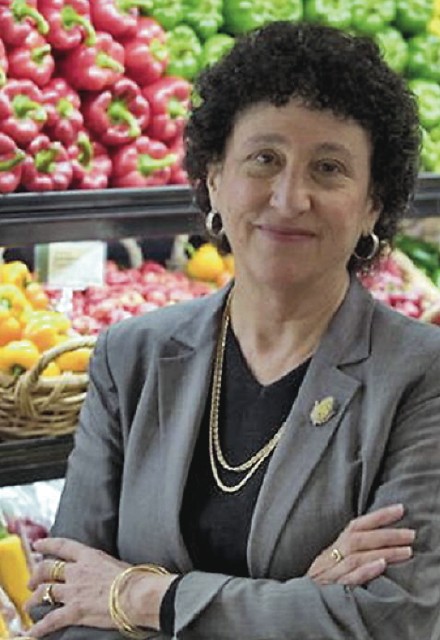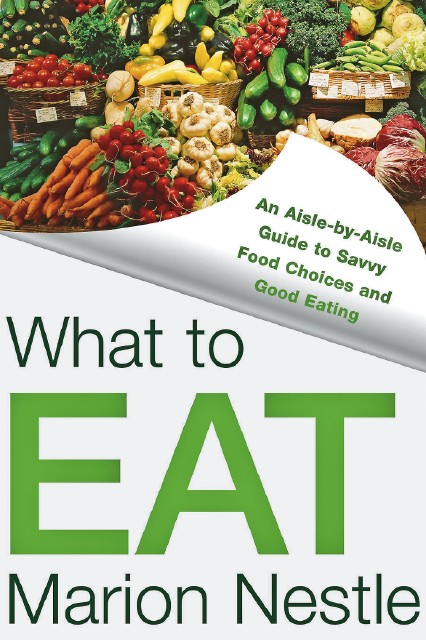“I’m a subversive,” declares Dr. Marion Nestle, author of the new book, What to Eat. Dr. Nestle, a professor of nutrition and public health, voiced her comments this week in Albuquerque at the Fourth Annual UNM Obesity Symposium.In her address, she argued that there are tectonic forces governing the American food system: politics, economics and industry all wield powerful and subtle influences over our nation’s food supply to the detriment of public health. She contended that these influences create a perplexing atmosphere that makes it difficult to make good food choices. If these forces are as manifest as Dr. Nestle suggests, subversion of the food system is, in fact, a recommended course of action. Nestle offers her new book as a resource to subvert the system by becoming an informed shopper. What to Eat is a comprehensive, readable manual for wise food consumerism. Dr. Nestle sits atop a mighty stack of credentials, and has made a career of investigating food production and consumption.She holds a Master’s degree in public health education and a Ph.D. in molecular biology, both from the University of California at Berkeley. She edited the 1988 Surgeon General’s Report on Nutrition and Health . She is the current Paulette Goddard Professor of Nutrition, Food Studies and Public Health at New York University, and former chair of that department. You also might recognize Dr. Nestle from her brief scene in the movie Super Size Me , where she explains the scientific definition of “calorie.” Though well-received by many academics and health professionals, Nestle’s work has inspired vilification by the food industry. The Center for Consumer Freedom, a coalition of restaurants, food industries and consumers, describes Nestle as “one of the country’s most hysterical anti-food-industry fanatics.” Nestle has written several books tackling the most topical issues in nutrition. Her first book, Food Politics—How the Food Industry Influences Nutrition and Health (2002) won the James Beard Foundation Award for Excellence in 2003. The work was described by the American Journal of Clinical Nutrition as “a book that deserves to change national and international attitudes.”Her second book, Safe Food: Bacteria, Biotechnology, and Bioterrorism (2003) was also well-regarded by reviewers at the New England Journal of Medicine and the New York Times . Dr. Nestle’s most recent book, What to Eat, was published just this month. The book is basically a field guide for food shopping. At 611 pages, the size of the book is intimidating, but the volume opens with some soothingly simple advice on healthful living: “eat less, move more, eat lots of fruits and vegetables, and go easy on junk foods.”Though this advice is straightforward and unchanged for decades, following this advice is not as easy as you might expect. Nestle posits there are “tremendous influences persuading you to eat more, and more of the wrong things.” This “gorge yourself environment” is a principal contributor to the obesity epidemic.Obesity is not just an epidemic, but a recent epidemic. In 1986, less than 10 percent of New Mexicans were obese. That number more than doubled by 2004. Obesity is a risk factor for a vast array of disorders, including diabetes, heart disease and cancer. So the question must be considered–what is causing obesity rates to rise? “It’s the deep dark secret of American agriculture that there is far too much food available,” she says. Her premise is simple: Surplus food means surplus calories.Dr. Nestle estimates that today there are 3,900 calories per person per day available in the nation’s food supply. That’s a significant increase from the 3,200 calories per person available in 1980. The average person requires about 2,000 calories per day and, depending on a person’s size, age and activity level, the calorie requirement can be much less. However, as that excess food is produced, it must be sold. The result is an incredibly competitive food market that strives to sell 3,900 calories to you, every day. The forces driving the production and sales of these calories are awesome in dimension, sophistication and complexity. But the book manages to approach these daunting topics in a reasonably friendly, accessible form.The book is organized as a journey through a supermarket. First, supermarkets themselves are examined. Nestle discusses various aspects of the supermarket, from the physical layout of the store to the financial relationships among the supermarkets and food vendors. She observes that all supermarkets are arranged in the same way (produce at the entrance, milk at the back, junk foods and cereals in the middle rows, etc.) to best promote sales. The rest of the book follows a route through this typical supermarket, examining each food product as it appears in turn. Nestle addresses the most relevant and confusing issues pertinent to each product. In the produce section, for example, she considers questions about genetically modified foods, organic versus inorganic and the produce’s country of origin. In examining these issues she considers scientific debate along with political and economic influences.Almost every conceivable topic–mercury in fish, the health benefits of soy, the political hazards of coffee and the efficacy of supplements, just to name a few–is addressed in relatively simple, straightforward language. In doing so, Nestle provides an excellent resource for any person attempting to make informed decisions at the supermarket. Dr. Nestle does not shy from incendiary arguments. For example, a statement commonly repeated by health professionals, “The keys to healthful eating are variety, balance and moderation,” is indicted as propagation of the “eat more” mentality. While controversial, her argument against that advice is well-reasoned. Nevertheless, such opinions are bound to generate debate. Unfortunately, the book is not referenced in a traditional, or particularly handy, way. There are endnotes, but there are no reference numbers in the text. After her assertions, the reader is forced to flip to the endnotes and see if the sentence that aroused curiosity was, in fact, referenced at all. The system is maddening if you are trying to qualify Nestle’s claims. This format does create a more casual, as opposed to academic, reading experience. Presumably, the reason this strange arrangement was employed is to help make the complex material more accessible. However, this strategy seems a minor, but unnecessary, compromise to the book’s credibility. Overall, the book successfully tackles a vast array of food issues and makes a strong case for educated consumerism. This weekend, Nestle implored the audience at the Albuquerque Obesity Symposium to become informed food shoppers. “Unlike tax policy or global warming, food is something you can do something about,” she said. “Every time you buy something you vote with your dollar. Go out there and vote with your fork.”
North Point Press, hardcover, $30




